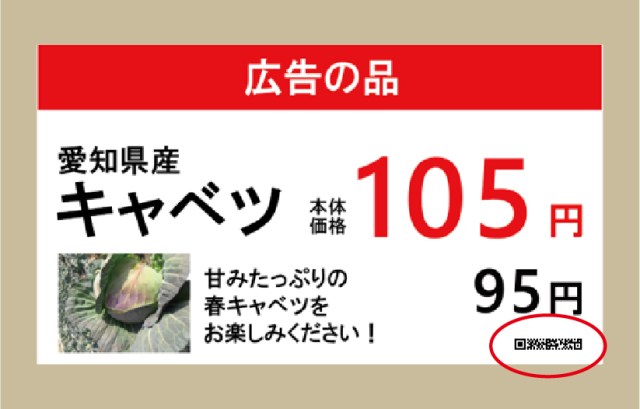
What’s old is new again.
For the longest time we’ve been using UPC bar codes to store strings of information in a compact space on both product labels and people in dystopian sci-fi movies. But as our needs grew and became more advanced, something better was also needed.
And so, in 1994 Denso Wave, a subsidiary of Toyota, developed the QR code as a way to scan larger amounts of information more quickly on product labels or by drones in the sky, with the added benefit of freaking people out.
But familiarity often breeds contempt, and as QR codes became a part of our everyday lives, they began to feel clunky in their own right. In a similar way to the old half-full or half-empty glass of water quandary, a square code could be seen either as a short bar or a fat bar depending how you look at it.
▼ How am I supposed to put this QR code on a drinking straw? Never mind “why,” I just want it there!
In response to such concerns the Micro QR code was developed, but it’s compact size came at the price of limited data storage.
▼ I can barely fit a specific page’s URL! And you call yourself a code…
Now, Denso Wave feels they have struck a balance between the beefy storage of a QR code with the sleek elegance of a bar code with the rMQR code. It has a layout like a stretched out Micro QR code, but boasts about ten times the data capacity.
For comparison, a standard QR code can hold up to 7,089 numerical digits or 4,296 English letters. A Micro QR code can only contain up to 35 numbers or 21 letters, but a rMQR code ups it to 361 numbers or 219 letters with only a slight increase in size over the Micro QR code.
The rMQR code format has already been approved by ISO, making them available for widespread use. They can also fit into and onto an number of places where a standard QR code might have problems, such as the border of a picture or curved surface of a vial.
And so it looks like the classic bar is making a triumphant return to the world of codes. It just goes to show that as the world constantly evolves so to must the means of data storage and communication advance. It’s still too early to say if this new format will overtake the original QR code, but if it does I will feel really bad for all those people who got one tattooed on themselves.
Source, images: PR Times
● Want to hear about SoraNews24’s latest articles as soon as they’re published? Follow us on Facebook and Twitter!

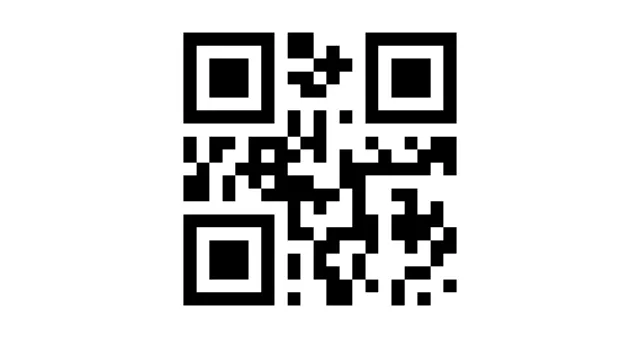
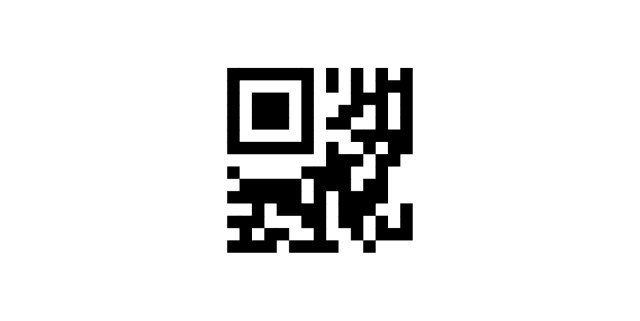
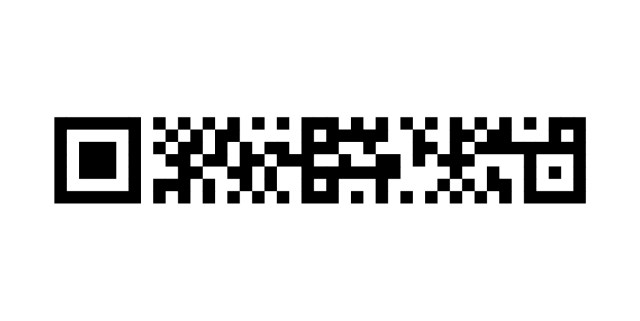
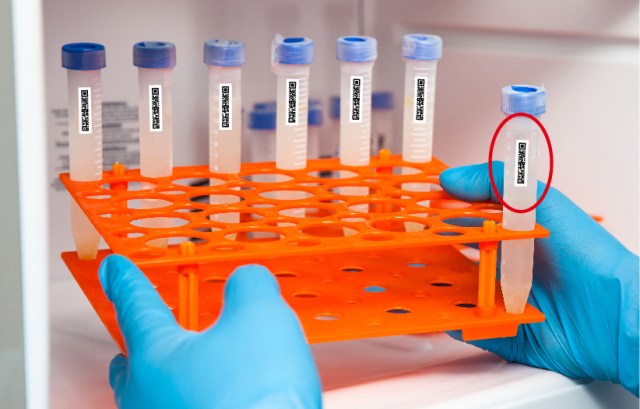

 Futuristic drinks stand in Tokyo lets you order cute, personalised beverages from your phone
Futuristic drinks stand in Tokyo lets you order cute, personalised beverages from your phone Send a free drink to a friend with Japan’s newest coinless vending machines【Video】
Send a free drink to a friend with Japan’s newest coinless vending machines【Video】 Japanese student draws functional QR code on school chalkboard, you’ll never guess where it leads
Japanese student draws functional QR code on school chalkboard, you’ll never guess where it leads 7-Eleven Japan’s new microwaves know how long your bento should be warmed up, even if you don’t
7-Eleven Japan’s new microwaves know how long your bento should be warmed up, even if you don’t How to use Japan’s new self-checkout supermarket carts
How to use Japan’s new self-checkout supermarket carts Foreigner’s request for help in Tokyo makes us sad for the state of society
Foreigner’s request for help in Tokyo makes us sad for the state of society Japan’s summertime towelket pillowcases are even better with the addition of Ghibli stars【Photos】
Japan’s summertime towelket pillowcases are even better with the addition of Ghibli stars【Photos】 Should you add tartar sauce to Japanese curry rice? CoCo Ichi makes diners an unusual offer
Should you add tartar sauce to Japanese curry rice? CoCo Ichi makes diners an unusual offer Seaside scenery, history, and so many desserts on Yokohama’s Akai Kutsu【Japan Loop Buses】
Seaside scenery, history, and so many desserts on Yokohama’s Akai Kutsu【Japan Loop Buses】 Japanese city loses residents’ personal data, which was on paper being transported on a windy day
Japanese city loses residents’ personal data, which was on paper being transported on a windy day Suntory x Super Mario collaboration creates a clever way to transform into Mario【Videos】
Suntory x Super Mario collaboration creates a clever way to transform into Mario【Videos】 10 crazy pizzas from Japan
10 crazy pizzas from Japan Japan’s massive matcha parfait weighs 6 kilos, contains hidden surprises for anyone who eats it
Japan’s massive matcha parfait weighs 6 kilos, contains hidden surprises for anyone who eats it Energy Milk from Japan is the new way to power up your day
Energy Milk from Japan is the new way to power up your day The 10 best anime of the fall season, according to Japanese otaku
The 10 best anime of the fall season, according to Japanese otaku McDonald’s new Happy Meals offer up cute and practical Sanrio lifestyle goods
McDonald’s new Happy Meals offer up cute and practical Sanrio lifestyle goods Japanese ramen restaurants under pressure from new yen banknotes
Japanese ramen restaurants under pressure from new yen banknotes French Fries Bread in Tokyo’s Shibuya becomes a hit on social media
French Fries Bread in Tokyo’s Shibuya becomes a hit on social media Studio Ghibli releases new action figures featuring Nausicaä of the Valley of the Wind characters
Studio Ghibli releases new action figures featuring Nausicaä of the Valley of the Wind characters Red light district sushi restaurant in Tokyo shows us just how wrong we were about it
Red light district sushi restaurant in Tokyo shows us just how wrong we were about it New private rooms on Tokaido Shinkansen change the way we travel from Tokyo to Kyoto
New private rooms on Tokaido Shinkansen change the way we travel from Tokyo to Kyoto Tokyo Tsukiji fish market site to be redeveloped with 50,000-seat stadium, hotel, shopping center
Tokyo Tsukiji fish market site to be redeveloped with 50,000-seat stadium, hotel, shopping center Beautiful Ghibli sealing wax kits let you create accessories and elegant letter decorations【Pics】
Beautiful Ghibli sealing wax kits let you create accessories and elegant letter decorations【Pics】 Studio Ghibli releases Kiki’s Delivery Service chocolate cake pouches in Japan
Studio Ghibli releases Kiki’s Delivery Service chocolate cake pouches in Japan New definition of “Japanese whiskey” goes into effect to prevent fakes from fooling overseas buyers
New definition of “Japanese whiskey” goes into effect to prevent fakes from fooling overseas buyers Our Japanese reporter visits Costco in the U.S., finds super American and very Japanese things
Our Japanese reporter visits Costco in the U.S., finds super American and very Japanese things All-you-can-drink Starbucks and amazing views part of Tokyo’s new 170 meter-high sky lounge
All-you-can-drink Starbucks and amazing views part of Tokyo’s new 170 meter-high sky lounge More foreign tourists than ever before in history visited Japan last month
More foreign tourists than ever before in history visited Japan last month New Pokémon cakes let you eat your way through Pikachu and all the Eevee evolutions
New Pokémon cakes let you eat your way through Pikachu and all the Eevee evolutions Disney princesses get official manga makeovers for Manga Princess Cafe opening in Tokyo
Disney princesses get official manga makeovers for Manga Princess Cafe opening in Tokyo Sales of Japan’s most convenient train ticket/shopping payment cards suspended indefinitely
Sales of Japan’s most convenient train ticket/shopping payment cards suspended indefinitely Sold-out Studio Ghibli desktop humidifiers are back so Totoro can help you through the dry season
Sold-out Studio Ghibli desktop humidifiers are back so Totoro can help you through the dry season Japanese government to make first change to romanization spelling rules since the 1950s
Japanese government to make first change to romanization spelling rules since the 1950s Ghibli founders Toshio Suzuki and Hayao Miyazaki contribute to Japanese whisky Totoro label design
Ghibli founders Toshio Suzuki and Hayao Miyazaki contribute to Japanese whisky Totoro label design Doraemon found buried at sea as scene from 1993 anime becomes real life【Photos】
Doraemon found buried at sea as scene from 1993 anime becomes real life【Photos】 Tokyo’s most famous Starbucks is closed
Tokyo’s most famous Starbucks is closed One Piece characters’ nationalities revealed, but fans have mixed opinions
One Piece characters’ nationalities revealed, but fans have mixed opinions We asked a Uniqlo employee what four things we should buy and their suggestions didn’t disappoint
We asked a Uniqlo employee what four things we should buy and their suggestions didn’t disappoint Princesses, fruits, and blacksmiths: Study reveals the 30 most unusual family names in Japan
Princesses, fruits, and blacksmiths: Study reveals the 30 most unusual family names in Japan Tokyo taxi company to release smartphone app with battling princesses
Tokyo taxi company to release smartphone app with battling princesses Adorable Pikachu smartphone printer is ready to print out your New Pokémon Snap snapshots
Adorable Pikachu smartphone printer is ready to print out your New Pokémon Snap snapshots Lawson begins first self-service convenience store in Tokyo, no line-ups necessary
Lawson begins first self-service convenience store in Tokyo, no line-ups necessary No coins? Not a problem for Japan’s new cashless gachapon capsule toy vending machines
No coins? Not a problem for Japan’s new cashless gachapon capsule toy vending machines Tokyo’s new rental umbrella service is perfect for sudden showers, staying dry on the cheap
Tokyo’s new rental umbrella service is perfect for sudden showers, staying dry on the cheap One of Japan’s biggest convenience store chains testing walk-through cashless payment system
One of Japan’s biggest convenience store chains testing walk-through cashless payment system Time for Japan to start tipping taxi drivers? Cab company now gives passengers option in Tokyo
Time for Japan to start tipping taxi drivers? Cab company now gives passengers option in Tokyo Pokémon fan creates spectacular 3D hologram battle dome entirely from scratch【Video & Pics】
Pokémon fan creates spectacular 3D hologram battle dome entirely from scratch【Video & Pics】 Friending Japan’s Liberal Democratic Party will get you free Shinzo Abe stamps for Line messenger
Friending Japan’s Liberal Democratic Party will get you free Shinzo Abe stamps for Line messenger First-ever foot-operated vending machine appears in Japan during pandemic
First-ever foot-operated vending machine appears in Japan during pandemic Handy portable battery charging service now available in downtown Tokyo for just 108 yen
Handy portable battery charging service now available in downtown Tokyo for just 108 yen Coca-Cola Japan releases new Peach Coke for 2019
Coca-Cola Japan releases new Peach Coke for 2019 Website lets you make yourself into a Sanrio character for a virtual parade with Hello Kitty!
Website lets you make yourself into a Sanrio character for a virtual parade with Hello Kitty! Starbucks unveils new Halloween Frappuccino in Japan
Starbucks unveils new Halloween Frappuccino in Japan Learn about Noh with these cool accessories from Felissimo Museum Division
Learn about Noh with these cool accessories from Felissimo Museum Division
Leave a Reply